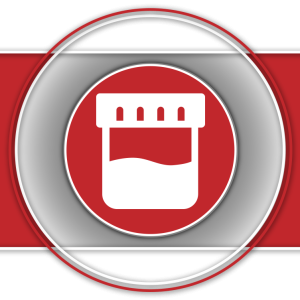Drug usage amongst employees in a workplace or, worse yet, while operating heavy machinery for transportation needs, is not just unsafe, it is unethical and illegal. People that use drugs while working are putting themselves and others at risk through a much higher chance of error thanks to the altered state of consciousness, drugs at work can cause, or the residual effects that still linger when a person tries to work after the immediate effects have worn off. Drugs can have a variety of different effects, from the outright hallucinations of psychedelic substances, to the manic behavior of cocaine that can severely impact both decision making and professional relationships in the workplace.
There are many reasons aside from the legal obligation to want to root out and eliminate drug usage from your workplace. The 10 panel drug test is one of the methods that can be used for far ranging results if you want to test for as broad a spectrum of drugs as possible. But what exactly is this method and how does it work?
Casting A Wide Net
A 10 panel drug test is merely one configuration of a general type of drug testing known as panel drug testing. Panel drug tests are designed to screen for numerous types of drugs from only one sample, which makes them very efficient, since it means that employers don’t have to lose too much time from workers repeatedly giving multiple samples, and the employees themselves don’t experience as much of an imposition on their time or their biology with too many tests.
The industry has a standard panel of drugs typically in the 10 panel drug test. This panel includes: AMP-Amphetamines (including MAMP-Methamphetamine, MDMA-Ecstasy); COC-Cocaine: OPI-Opiates (including codeine, morphine and heroin); PCP-Phencyclidine; THC-Marijuana; BZO-Benzodiazepines BAR-Barbiturates; MTD-Methadone; PPX-Propoxyphene; and Meth – Methaqualone.
While we offer the 10 panel drug test, this type of testing is available for different numbers of drugs depending on the professional requirements a company may have. There are 5, 7, 10, and 12 panel drug tests available on the general market, but all of them fulfill the same function; with just one sample, they can screen for a select number of drugs.
Screening Your Preferences
The 10 panel drug test, like all panel drug tests, can be configurable. The specific drugs that you would like to have screened can be included in the panel, while the drugs that aren’t relevant or common to your industry can be left out. So, for example, if you are more concerned with detecting the presence of prescription drugs rather than proscribed substances such as cocaine, the selected substances can be included in your test. If your focus is more specifically on opiates and opioids than anything else, it’s possible for those particular drugs to be configured into your test requirements. Note that custom panels might be more expensive than the standard panels.
Ultimately, the major advantage of a 10 panel drug test is that the choice is yours. Different companies will have different interests in terms of what they would like to screen for. A company with an extensive trucking fleet is going to focus on a different range of drug tests from a company that is largely confined to traditional office activities. A 10 panel drug test can cater to both. Note that DOT regulated trucking companies are currently required to use the DOT 5 panel drug test.
How It Works
The 10 panel drug test, as with the other panel tests, is very simple to administer because it relies on a urine sample. Urine testing works in a simple fashion; many drugs used will linger in the body even days after usage. Alcohol is not one of these substances, as a single ounce can pass through the system and evade drug panel detection within 90 minutes of consumption. But for other drugs such as marijuana or methadone, there are certain metabolites that will remain in the system for 48 hours or more. Once the urine sample has been donated, the sample is then sent to a SAMHSA certified laboratory for testing and finally laboratory the data send to licensed medical review officer (MRO) to interpret the results. If the results are negative, the subject is clean, but if any of the substances included as part of your selected test comes out positive, further testing for more specific confirmation and MRO review will occur before you are notified.
It’s important to note that this testing merely confirmed the presence of drugs in the system for recent usage. This is not a sobriety test to indicate levels of impairment or performance. Once the information has been assessed and confirmed, it is up to you to decide what you would like to do with the results, but it is not a medical diagnosis of a subject’s fitness or condition at the time of testing, merely an acknowledgement of the recent use and presence of drugs in the system.
If you’d like to know more about this type of drug screening and how it can help your pre-employment or regular business activities, contact us for more information. We have a full staff on standby to professionally review your and inform you of the results and we are fully compliant with the Department of Transportation requirements.

